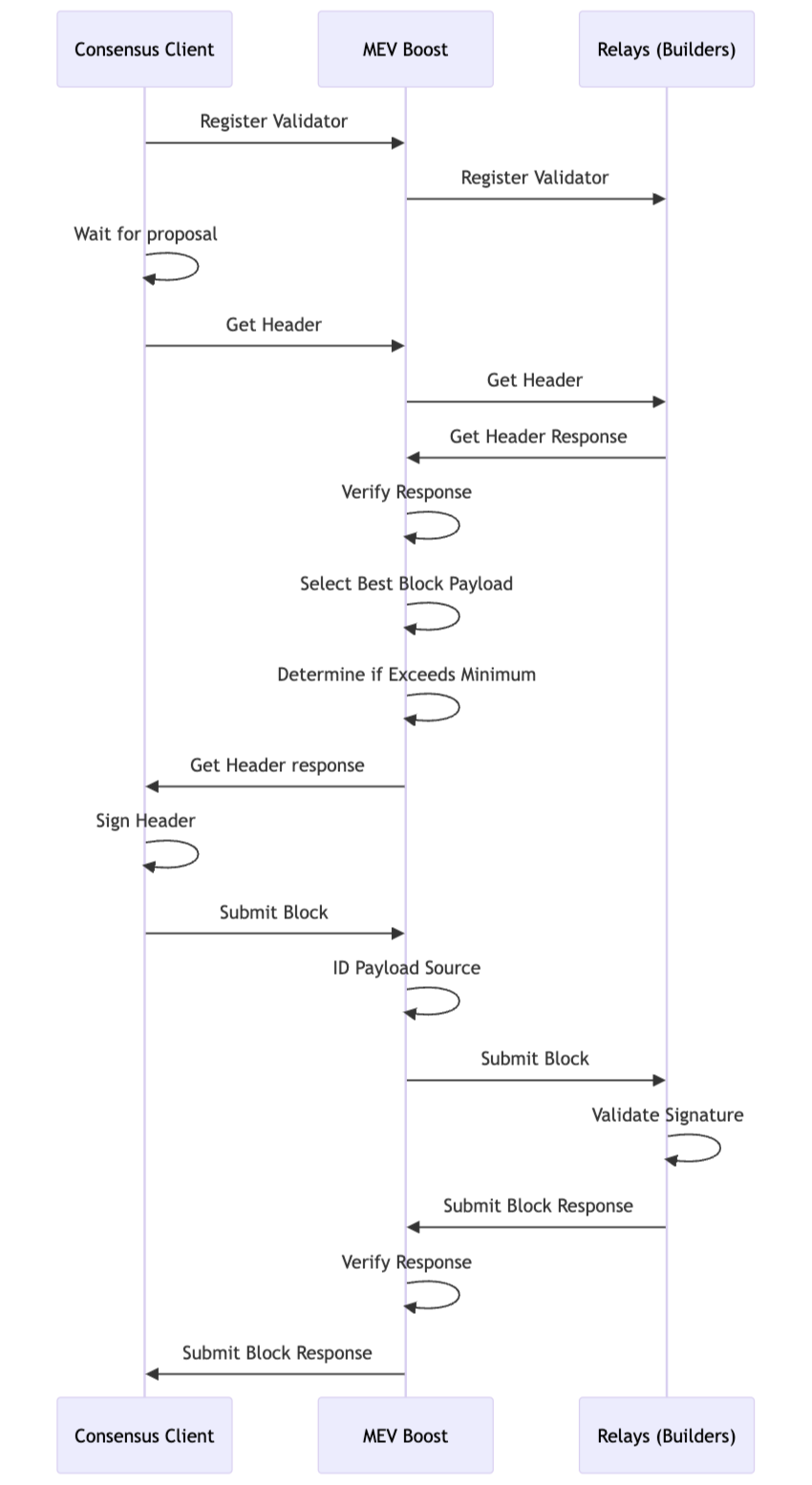Table of Contents
Appendix A Package Management Updates
To maintain optimal performance and security of your Node, it is crucial to regularly execute the following command:
sudo apt update && sudo apt -y full-upgrade && sudo apt -y autoremove && sudo apt -y autoclean
-
Update the package list for all configured repositories
-
Upgrade all packages to their latest versions and install all new dependencies required by updated packages
-
Remove any packages that were installed as dependencies that are no longer needed
-
Clean up the package cache
-
Not require your input (the -y flag prevents certain commands from being confirmed by you, you can feel free to remove if you’d like to see what will update and then permit that update in separate steps)
Note that because it’s a sudo command, you’ll need to enter your password.
It is not irregular for your Node to prompt you to restart it after some particular updates are made. Sometimes this is requested after packages are updated, other times it’s requested and shown to you upon your next login.
Appendix B Updating Reth
First, go to the Reth Repository here and expand the Assets section for the latest release. Copy the download link for the reth-v...-x86_64-unknown-linux-gnu.tar.gz file. Be sure to copy the correct link. It should look something like https://github.com/paradigmxyz/reth/releases/download/v1.10.0/reth-v1.10.0-x86_64-unknown-linux-gnu.tar.gz. Modify the URL in the instructions below to match the download link for the latest version, which is v1.10.0 in this example (current as of Jan 2026).
cd ~
curl -LO https://github.com/paradigmxyz/reth/releases/download/v1.10.0/reth-v1.10.0-x86_64-unknown-linux-gnu.tar.gz
tar xvf reth-v1.10.0-x86_64-unknown-linux-gnu.tar.gz
sudo cp reth /usr/local/bin
sudo systemctl start reth
sudo systemctl status reth # <-- Check for errors
sudo journalctl -fu reth | ccze # <-- Monitor
sudo journalctl -fu prysmbeacon | ccze # <-- Monitor
cd ~
rm reth-v1.10.0-x86_64-unknown-linux-gnu.tar.gz
reth --version
Appendix C Updating Prysm
In order to update Prysm, we’ll need to update both the validator and beacon-chain software.
First, let’s check the latest version of Prysm available on their GitHub repo, which can be accessed here. Be sure to copy the correct link, it should look something like https://github.com/OffchainLabs/prysm/releases/download/v7.1.2/beacon-chain-v7.1.2-linux-amd64.sha256. We will need to modify the commands below to match the latest version number, which is v7.1.2 in this example (current as of 1/7/26).
Curl the latest software and rename:
curl -LO https://github.com/OffchainLabs/prysm/releases/download/v7.1.2/validator-v7.1.2-linux-amd64
curl -LO https://github.com/OffchainLabs/prysm/releases/download/v7.1.2/beacon-chain-v7.1.2-linux-amd64
mv beacon-chain-v7.1.2-linux-amd64 beacon-chain
mv validator-v7.1.2-linux-amd64 validator
sudo systemctl stop prysmvalidator && sudo systemctl stop prysmbeacon
chmod +x beacon-chain
chmod +x validator
sudo cp beacon-chain /usr/local/bin
sudo cp validator /usr/local/bin
sudo chown -R prysmbeacon:prysmbeacon /var/lib/prysm/validator/ && sudo chown -R prysmvalidator:prysmvalidator /var/lib/prysm/validator/
sudo systemctl daemon-reload
sudo systemctl start prysmbeacon
sudo systemctl start prysmvalidator
sudo rm beacon-chain && sudo rm validator
sudo systemctl status prysmbeacon # <-- Check for errors
sudo journalctl -fu prysmbeacon.service | ccze # <-- Monitor
sudo systemctl status prysmvalidator # <-- Check for errors
sudo journalctl -fu prysmvalidator.service | ccze # <-- Monitor
journalctl --since -1hour -u prysmvalidator.service | grep version
journalctl --since -1hour -u prysmbeacon.service | grep version
sudo ls -l /var/lib/prysm/beacon/blobs/
drwx------ 4 prysmbeacon prysmbeacon 4096 {MMM DD HH:MM} by-epoch.
Appendix D Exiting a Validator
As of May 2025, you can now use the Ethereum Launchpad Validator Actions to perform a validator exit via GUI. Note that you will need to be able to connect your withdrawal address to the site in order to proceed. If this is not possible or you would prefer to use the CLI method, please consult the Prysm documentation. Otherwise, refer to Appendix G Launchpad Validator Actions.
Removing Exited Validators from Your Node
After a validator has fully exited and you’ve withdrawn your funds, you may want to remove its keys from the validator client. This will clean up your Grafana dashboard and stop tracking the exited validator.
First, list your current validator accounts to find the pubkey of the validator you want to remove:
sudo /usr/local/bin/validator accounts list --wallet-dir=/var/lib/prysm/validator
sudo systemctl stop prysmvalidator
sudo /usr/local/bin/validator accounts delete --wallet-dir=/var/lib/prysm/validator --delete-public-keys=0xYOUR_PUBKEY_HERE
sudo systemctl start prysmvalidator
0xYOUR_PUBKEY_HERE with the full public key of the exited validator you want to remove. You can delete multiple validators at once by separating pubkeys with commas (no spaces).
Note: Only remove validators that have fully exited and whose funds have been withdrawn. Removing an active validator’s keys will cause missed attestations and penalties.
Appendix E Checking Sync Committee Duties
Before performing maintenance (like updating Reth or Prysm), it is prudent to check upcoming sync committee duties (described up to ~27 hours in advance) so as not to be offline when you would otherwise be part of a committee.
If any of the validators (as identified by the validator index numbers in the command) have upcoming duties, there will be additional output that says “validator: 123511 found in next sync committee”. If no such text is present, the validators in question do not have upcoming sync duties.
Note that this requires the following script be set up and made executable:
#!/bin/sh
# Set the URL of the local beacon node (Prysm default port)
BEACON_NODE="http://localhost:3500"
# Convert space-separated validator indices from command line arguments to a regex pattern
VALIDATOR_LIST=$(echo "$@" | tr ' ' '|')
# Function to convert epoch to Unix time
epoch_to_time() {
expr 1606824000 + \( $1 \* 384 \)
}
# Function to convert Unix time to epoch
time_to_epoch() {
expr \( $(date +%s) - 1606824000 \) / 384
}
# Function to get committee member indices from the Beacon Node API
get_committee() {
URL="${BEACON_NODE}/eth/v1/beacon/states/finalized/sync_committees?epoch=$1"
RESPONSE=$(curl -s -X GET "$URL")
if [ -z "$RESPONSE" ]; then
echo "Error fetching data from Beacon Node API."
exit 1
fi
echo "$RESPONSE" | sed -e 's/["]/''/g' | cut -d'[' -f2 | cut -d']' -f1 | tr ',' '\n'
}
# Function to search for validator indices in the committee
search_committee() {
COMMITTEE=$(get_committee $2)
echo "$COMMITTEE" | grep -Ex $VALIDATOR_LIST \
| awk -v c=$1 '{print "validator:", $1, "found in", c, "sync committee"}'
}
# Function to display the epoch and its corresponding date
display_epoch() {
EPOCH_TIME=$(epoch_to_time $1)
DATE=$(date -d @"$EPOCH_TIME" '+%Y-%m-%d %H:%M:%S')
echo "epoch: $1 : $DATE <-- $2"
}
# Main operation
curr_epoch=$(time_to_epoch)
curr_start_epoch=$(expr $curr_epoch / 256 \* 256)
next_start_epoch=$(expr $curr_start_epoch + 256)
nextb1_start_epoch=$(expr $next_start_epoch + 256)
display_epoch $curr_start_epoch "current sync committee start"
display_epoch $next_start_epoch "next sync committee start"
display_epoch $nextb1_start_epoch "next-but-one sync committee start"
if [ "$#" -gt 0 ]; then
search_committee "current" $curr_start_epoch
search_committee "next" $next_start_epoch
search_committee "next-but-one" $nextb1_start_epoch
fi
sudo nano check_sync_committee.sh
sudo chmod +x check_sync_committee.sh
sudo apt update && sudo apt install -y curl gawk sed coreutils
./check_sync_committee.sh 655262 655258 655260 655226 1296208
Appendix F MEV-Boost
MEV-boost (Maximal Extractable Value) is software that allows stakers to access MEV, earning them higher block rewards by using open-source middleware (MEV-boost by Flashbots) that allows access to the competitive block-building market. See more information about proposer-builder separation here.
There are trade-offs and choices to make in terms of which block-builders are used here, namely, is the relay censoring aka OFAC compliant and is the relay ethical aka does it employ frontrunning and sandwich attack methods to increase MEV. Endaoment and this guide do not support or otherwise condone the use of unethical or illegal MEV-boost practices.
While Endaoment will be using this software to increase staking rewards, we are of the opinion that MEV-burn is a preferable system where MEV-boost is rendered useless (in this system, any and all MEV is automatically burnt, as opposed to being rewarded to randomly chosen proposer based on their willingness to run ethical or unethical MEV).

MEV Boost Set Up
Let’s get to installing! All commands below are based on the current version of MEV-boost as of 11.14.25, v1.10.1, but should be adjusted based on whatever the latest version of MEV-boost is here. Simply scroll to the bottom of the linked releases page, and right click the .tar.gz file that contains linux_amd64. Copy that link and replace all file names and links below.
Create mevboost service account:
sudo useradd --no-create-home --shell /bin/false mevboost
cd ~
curl -LO https://github.com/flashbots/mev-boost/releases/download/v1.10.1/mev-boost_1.10.1_linux_amd64.tar.gz
sha256sum mev-boost_1.10.1_linux_amd64.tar.gz
tar xvf mev-boost_1.10.1_linux_amd64.tar.gz
sudo cp mev-boost /usr/local/bin
rm mev-boost LICENSE README.md mev-boost_1.10.1_linux_amd64.tar.gz
sudo chown mevboost:mevboost /usr/local/bin/mev-boost
sudo nano /etc/systemd/system/mevboost.service
[Unit]
Description=mev-boost ethereum mainnet
Wants=network-online.target
After=network-online.target
[Service]
User=mevboost
Group=mevboost
Type=simple
Restart=always
RestartSec=5
ExecStart=/usr/local/bin/mev-boost \
-mainnet \
-min-bid {MinBid} \
-relay-check \
-relay {RelayAddress} \
-relay {RelayAddress}
[Install]
WantedBy=multi-user.target
{MinBid} with the minimum MEV bid required to use the block builder (else, you will build the block locally). Format this value like 0.05.
Make sure to replace {RelayAddress} with the relay you would like to use to build your blocks for MEV. You can remove or add additional relay lines as needed - any listed relays will compete for the best MEV.
Press CTRL + X then Y then ENTER to save and exit.
Reload systemd to reflect the changes and start the service. Check the status to make sure it’s running correctly:
sudo systemctl daemon-reload
sudo systemctl start mevboost
sudo systemctl status mevboost
sudo journalctl -fu mevboost | ccze
sudo systemctl enable mevboost
Update BeaconChain and Validator Software
In order to get the mevboost service to properly communicate with Prysm, we’ll need to adjust both service files.
Open the prysmbeacon service file:
sudo nano /etc/systemd/system/prysmbeacon.service
--http-mev-relay=http://127.0.0.1:18550
sudo nano /etc/systemd/system/prysmvalidator.service
sudo systemctl daemon-reload
sudo systemctl restart prysmbeacon prysmvalidator
journalctl -fu prysmbeacon | ccze
journalctl -fu prysmvalidator | ccze
Update MEV Boost
Before updating, always review the latest MEV-boost release notes for new requirements and any breaking changes. Typically, you need to ensure that you have the latest execution and consensus client versions installed in order for MEV-boost to work properly.
⚠️ Important: MEV-Boost v1.10.1 is a required update for the upcoming Fusaka upgrade (epoch 411392, scheduled for Dec-03-2025 09:49:11 PM UTC). This version includes support for the new GetPayloadV2 API and Prometheus metrics.
First, stop the service:
sudo systemctl stop mevboost
linux_amd64. Copy that link and replace all file names and links below, which uses v1.10.1, latest as of 11.14.25.
Curl the MEV-boost build from the aforementioned link:
cd ~
curl -LO https://github.com/flashbots/mev-boost/releases/download/v1.10.1/mev-boost_1.10.1_linux_amd64.tar.gz
sudo systemctl stop mevboost
tar xvf mev-boost_1.10.1_linux_amd64.tar.gz
sudo mv mev-boost /usr/local/bin
rm LICENSE README.md mev-boost_1.10.1_linux_amd64.tar.gz
sudo chown mevboost:mevboost /usr/local/bin/mev-boost
sudo systemctl start mevboost
sudo systemctl status mevboost
mev-boost --version
Appendix G Launchpad Validator Actions
As of May of 2025, the Ethereum Launchpad upgraded the list of actions you can take using the UI beyond simply making deposits into validators. If you navigate to the Validator Actions page and connect the wallet that represents your withdrawal address, you’ll be able to select a current validator and take a number of different actions with it depending on your withdrawal credentials (0x00, 0x01, or 0x02).
- Update account to compounding - this process converts your existing
0x00 or 0x01 withdrawal credentials to 0x02 (new in the Pectra hard fork). Having 0x02 withdrawal credentials allows you to increase your effective balance from 32 ETH to 2048 ETH so that you need not spin up a new validator for each tranche. When you make this change, regular withdrawals will cease, and partial withdrawals may be requested using this UI (see “Request partial withdrawal” below). In addition, rewards will be based on your current validator balance and increase as that balance increases, essentially compounding your rewards.
- Add funds to your validator - only available to validators using
0x02 withdrawal credentials (see “Update account to compounding” above), this action allows you to add additional ETH to your validator that is currently held elsewhere. This allows compounding rewards, and has a minimum deposit amount of 1 ETH.
- Request partial withdrawal - only available to validators using
0x02 withdrawal credentials (see “Update account to compounding” above), this action allows you to withdraw any portion of staked ETH over 32 to your withdrawal address.
- Absorb another validator - only available to validators using
0x02 withdrawal credentials (see “Update account to compounding” above), this action allows you to transfer the entire balance of another validator you control to the one you have selected, consolidating those validators into one.
- Migrate funds - this action allows you to transfer the entire balance of the validator you have selected to another one of your validators. The target consolidation validator must be using
0x02 withdrawal credentials (see “Update account to compounding” above).
- Exit validator - this action allows you to perform a full exit of your validator and withdraw the entire balance thereof.
Appendix H Resetting Reth Database
In rare cases, you may need to reset the Reth database and re-sync from scratch. Common reasons include:
- Database corruption from power outages or hardware failures
- Unclean shutdowns that left the database in an inconsistent state
- Storage format upgrades when a new Reth version requires a fresh sync
- Disk space recovery if the database has grown unexpectedly large
This will delete all synced execution layer data and require a full re-sync, which can take hours to days depending on your sync method. Only proceed if other troubleshooting steps have failed.
Check If a Reset Is Necessary
Before resetting, try restarting Reth first—many issues resolve with a clean restart:
sudo systemctl restart reth
sudo journalctl -fu reth | ccze
Database corrupted, Checksum mismatch, or Failed to open database, a reset may be necessary.
Reset the Database
First, stop the Reth service:
Remove all data from the Reth data directory:
sudo rm -rf /var/lib/reth/*
Re-sync Options
Option 1: Sync from Genesis (Slower, Smaller)
Simply restart Reth and it will begin syncing from genesis using the --full flag configuration:
sudo systemctl start reth
Monitor Re-sync Progress
Watch the logs to monitor sync progress:
sudo journalctl -fu reth | ccze
curl -X POST -H "Content-Type: application/json" --data '{"jsonrpc":"2.0","method":"eth_syncing","params":[],"id":1}' http://localhost:8545
{"jsonrpc":"2.0","id":1,"result":false} indicates sync is complete.
Note: Your beacon chain will show errors until Reth finishes syncing. This is expected—once Reth catches up, the beacon chain will resume normal operation.

